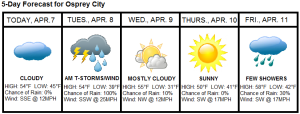After over 160 years in business, Aspinall Wholesale of Osprey City is finally closing its doors this Friday. Owner Stephen Aspinall cited decreasing profitability due to rising fuel costs and easier access to goods produced by overseas competitors. The company was a longtime pillar of the community, sponsoring everything from art fairs to academic scholarships to Little League baseball teams. According to Aspinall, the company’s remaining 150 employees will receive lavish compensation packages and job placement services.
Founded in 1852 by Gregory Aspinall, an immigrant merchant from Lancashire, England, Aspinall Wholesale rose to prominence as the chief supplier of goods to most of Osprey City’s retailers. The company originally specialized in providing whaling industry products, such as ivory, baleen, and spermaceti to stores along the East Coast. As whaling declined in the United States, Aspinall Wholesale shifted its focus towards consumer goods, and by the early 1900s it was one of the foremost wholesale companies in New England. Aspinall Wholesale counted among its clients Goodman & Sons Clothiers, Kramer & Kramer, and MarcoMart.
Aspinall Wholesale has occupied the same red-brick warehouse in the Dockyard section of Osprey City since its founding. Members of the city’s Department of Cultural Activity have expressed interest in preserving the building as a historical landmark and converting it into a community arts center.



